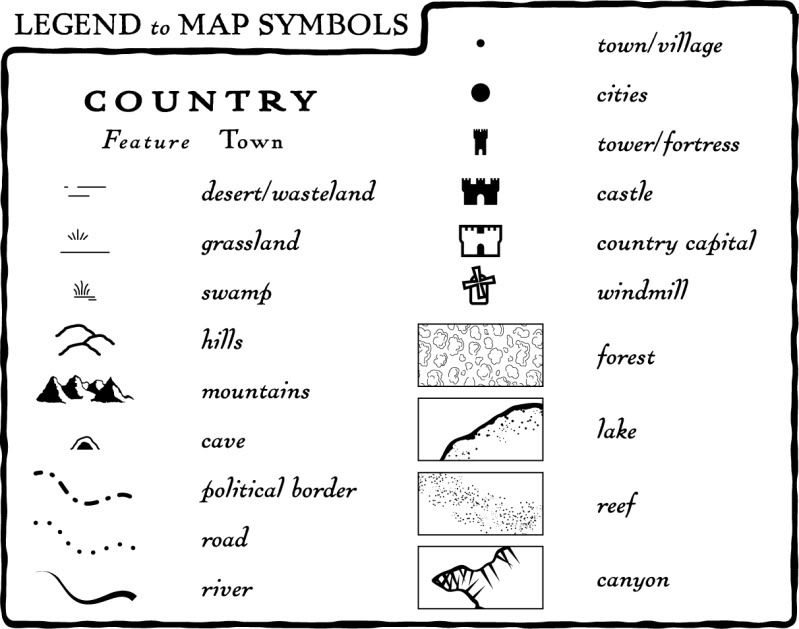4, Nov 2023
The Legend Of A Map: A Guide To Understanding Geographic Symbols
The Legend of a Map: A Guide to Understanding Geographic Symbols
Verwandte Artikel: The Legend of a Map: A Guide to Understanding Geographic Symbols
Einführung
Mit großer Freude werden wir uns mit das faszinierende Thema rund um The Legend of a Map: A Guide to Understanding Geographic Symbols vertiefen. Lassen Sie uns interessante Informationen zusammenfügen und den Lesern frische Perspektiven bieten.
Table of Content
The Legend of a Map: A Guide to Understanding Geographic Symbols

Maps, those intricate representations of our world, are more than just static images. They are powerful tools that convey complex information about landscapes, cities, and the distribution of various elements across the Earth’s surface. However, to truly decipher the secrets these maps hold, one must understand the language they speak – the language of map legends.
Understanding the Language of Symbols:
A map legend, also known as a map key, is a crucial element that provides the key to unlocking the meaning of the symbols used on a map. It acts as a visual glossary, translating the abstract shapes, colors, and patterns into tangible information. Without a legend, a map would be nothing more than an incomprehensible collection of lines, dots, and areas.
Imagine a map depicting a city. The legend might show that a blue line represents a river, a red line signifies a road, and different shades of green indicate various types of parks. This visual translation allows users to quickly grasp the map’s message and navigate its information effectively.
The Importance of Legibility and Clarity:
A well-designed map legend is essential for clear communication. It should be:
- Organized: The symbols and their explanations should be arranged logically, often in alphabetical order or based on thematic categories.
- Concise: The text accompanying each symbol should be brief and to the point, avoiding unnecessary jargon.
- Visually Appealing: The legend should be aesthetically pleasing, using contrasting colors and font sizes to ensure readability.
- Accessible: The legend should be positioned prominently on the map, making it easily accessible to the user.
Types of Map Legends:
Map legends can be categorized based on the type of information they convey:
- Basic Legends: These legends depict fundamental geographic features like roads, rivers, and landforms. They are common in general-purpose maps.
- Thematic Legends: These legends focus on specific themes, such as population density, rainfall patterns, or mineral deposits. They are often used in specialized maps designed to illustrate specific data.
- Hierarchical Legends: These legends present data in a hierarchical manner, using different symbols or colors to represent different levels of information. For example, a map showing population density might use darker shades to indicate areas with higher population density.
The Benefits of a Well-Defined Legend:
A well-designed map legend offers several advantages:
- Enhanced Comprehension: It clarifies the meaning of symbols, making the map easier to understand and interpret.
- Improved Communication: It facilitates effective communication of geographic information to a wider audience.
- Increased Accuracy: It minimizes the risk of misinterpretation, ensuring accurate understanding of the map’s data.
- Enhanced Navigation: It aids in navigating the map, allowing users to locate specific features and understand their spatial relationships.
FAQs about Map Legends:
Q: Why are map legends important?
A: Map legends are crucial for understanding the meaning of symbols used on maps, enabling accurate interpretation and effective communication of geographic information.
Q: What are the different types of map legends?
A: Map legends can be categorized as basic, thematic, or hierarchical, depending on the type of information they convey.
Q: How can I improve the readability of a map legend?
A: A well-designed legend should be organized, concise, visually appealing, and positioned prominently on the map.
Q: How can I use a map legend to create an informative map?
A: By carefully selecting symbols and providing clear explanations in the legend, you can effectively convey complex geographic data and enhance the map’s overall effectiveness.
Tips for Creating Effective Map Legends:
- Keep it simple: Use clear and concise language, avoiding technical jargon.
- Use visual hierarchy: Employ different sizes, colors, and fonts to highlight important information.
- Test your legend: Ask someone unfamiliar with the map to interpret it and provide feedback.
- Consider your audience: Design the legend with the specific needs and knowledge level of your target audience in mind.
Conclusion:
Map legends are the unsung heroes of cartography. They provide the key to unlocking the secrets hidden within maps, enabling us to understand and interpret the complex world around us. By understanding the language of map legends, we can navigate the information landscape with confidence and unlock the full potential of these powerful tools.





![]()
Abschluss
Daher hoffen wir, dass dieser Artikel wertvolle Einblicke in The Legend of a Map: A Guide to Understanding Geographic Symbols bietet. Wir schätzen Ihre Aufmerksamkeit für unseren Artikel. Bis zum nächsten Artikel!
- 0
- By admin
